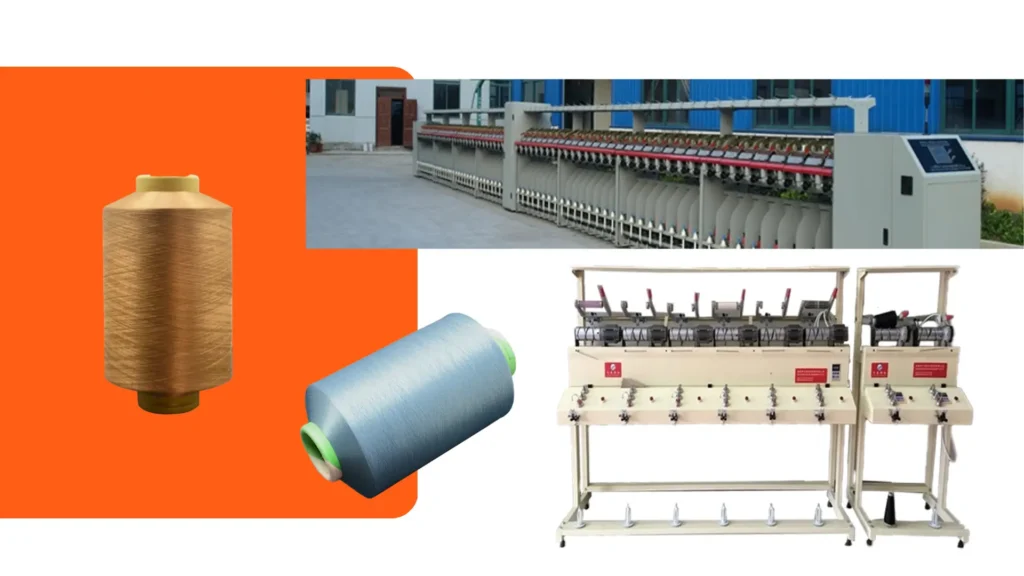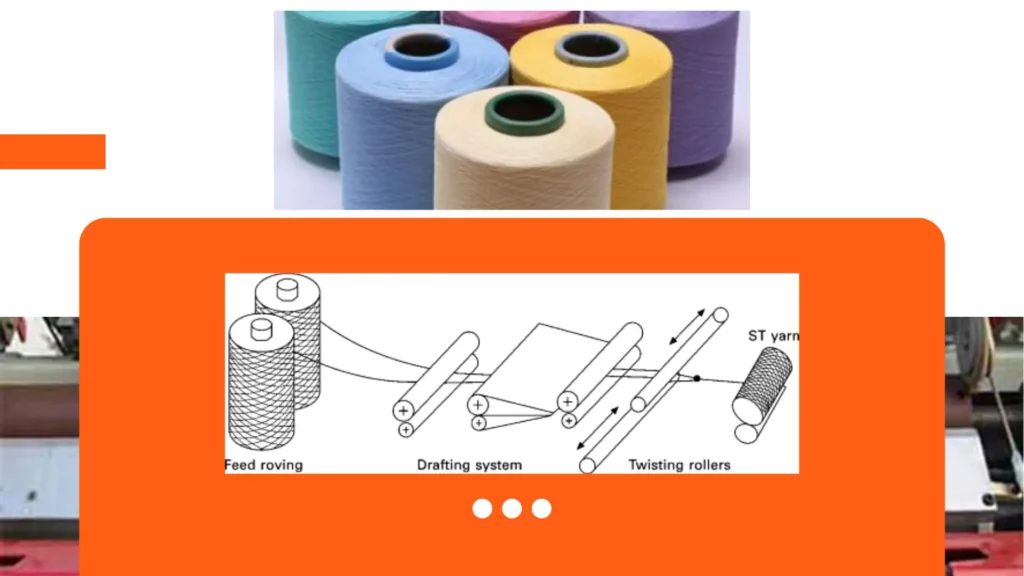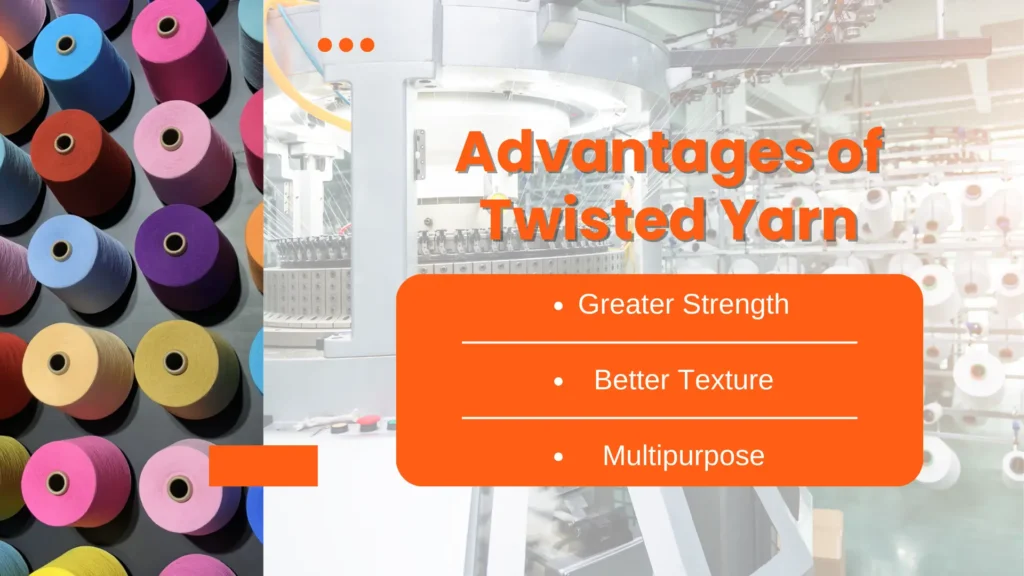The quality of the finished fabric in textile manufacturing is highly dependent on the quality of the yarn.
Twisted yarns are less susceptible to breakage and wear, rendering them fit for producing durable fabrics like denim or outdoor clothing.
The twisting process also influences the elasticity and flexibility of the yarn, which are very important for different types of garments.
Thus, yarn twisting machines are not tools but rather parts of efficient and effective contribution to textile production.
Yarn can be classified into various types: from natural fibers such as cotton, wool, and silk to synthetic fibers like polyester and nylon.
Each type of yarn has its own characteristics, which determine its behavior with respect to twisting.
Some might require special techniques to be twisted without losing their integrity; others might survive higher twisting speeds.
Hence, with knowledge about these differences, one finds it easy to select the right twisting machine and settings in relation to the desired yarn quality.

Types of Yarn Twisting Machines
Ring Twisting Machines
One of the most widely used machines in the textile sector is the ring twisting machine.
The twisting operations are affected using the ring and traveler principle.
This is something where the yarn goes through a ring and can be made to twist reputedly by the movement action of the traveler around the ring.
The method is well-known for producing such good quality yarn that are highly uniform and strong.
It has a further factor which makes the ring twisting machines useful for an expansive variety of yarn types-from fine threads by which garments are sewn to thicker yarns for knitting purposes.
Open-End Twisting Machines
Open-end twisting machines do not twist the yarn using the traditional technique but replace it with a rotor.
In this system, the fibers feed from either end to a chamber which is then made to rotate so that the fibers are twisted into each other without the use of a spindle.
This can be rated high in regard to output production and is well-suited for making bulkier kinds of yarns.
The yarn produced by open-end machines may be knitted and woven but will be characterized by incredible volume and loft, suitable for use in thick-textured end applications.
Machines for Air Jet Twisting
Air-jet twisting machines make use of high air speed for the twisting of yarn, which greatly increases production efficiency.
It is especially useful for synthetic fibers that require the same twist and a uniform twist without the mechanical tension of conventional methods.
Air-jet machines are capable of twisting multiple strands of yarn at once, and are thus well suited for bulk production.
The result ends up being a buoyant, very light yarn, which has been dimensionally stable and is primarily employed in applications requiring soft textures.
Machines for Z-twist and S-twist
Z- and S-twist machines further specialize in twisting yarn according to the twist direction and its significant effect on yarn properties.
Thus, Z-twist indicates the yarn twisted clockwise, while S-twist means the yarn is twisted counterclockwise.
The twist pattern will not only influence the strength and appearance of the yarn but also its interaction with different weaving or knitting techniques.
Thus, twisting direction selected by the manufacturers is based on the desired properties of the end textile product.
Mechanism of Yarn Twisting
The Basic Working Principle
The basic working principle of yarn twisting operation is to bring individual fibers closer together and then twist them about one another to form a coherent strand.
These causes increased friction among the fibers, which is an enhancement of their bonding and production of stronger yarn.
The mechanism of twisting varies according to the type of machine that one is using, but the main aim remains constant for all of them: to bring forth a yarn with required strength and durability for different purposes.
Also More:
Understanding the Mechanics: How Yarn Twisting Machines Work

Control systems
Modern yarn twisting machines are armed with sophisticated control systems that permit switching of twisting speed, tension, fiber feed rate, etc.
To be achieved is consistence in the produced yarn with less defects.
On digital interfaces, monitoring of the twisting operation and instantaneous adjustments can improve efficiency and quality of products.
Control of such measures is very essential since different yarn types have different yarn applications.
Maintenance Aspects
In fact a very good reason for maintenance of yarn twisting machines is that it will keep on furtherr working longer and much better.
Inspection is needed also for wear and tear coming onto the accessory components like spindles, rings, and belts.
Lubrication in moving components allows gaining friction-free motion and prevents heat formation, whereas immediate replacement of a worn-out component can help avoid the costly downtime.
Manufacturers should draw up a routine maintenance schedule to keep all machines in best shape, thus improving production efficiency and product quality.
Applications of Twisted Yarn
Clothing and Textiles
It is a very basic material in the field of clothing and apparel, twisted yarns giving strength and flexibility for different clothing from very light summer garments to very heavy winter garments.
Twisting also affects the drape and feel of a fabric; therefore, it becomes essential in attaining the right aesthetic as well as functional properties.
Good twisted yarns will easily make clothing comfortable and long-lasting, making them the most preferred for production.
Home Textiles
Twisted yarns have a place in home textiles as well, mainly for curtains, upholstery, and carpets.
It is generally strong and aids in giving the items required abrasion resistance over time without looking like it has gone through regular wear.
Aesthetically, those twisted yarns can add to the attraction of home textiles, making them versatile in designs.
This is one of the reasons why manufacturers will tend to go with twisted yarn for such applications: their durability and versatility.

Industrial Uses
Twisted yarn is a vital ingredient in today’s industrial applications where strength and long-lasting durability are required.
It is highly used in producing ropes, nets, and other products that are heavy-duty and need to perform under the loads stably.
The twisting process does not only impart the strength to the yarn but also increases its resistance against environmental factors like moisture and UV rays.
That makes twisted yarn an essential material in the construction, fishing, and outdoor equipment manufacturing industries.
Decorative Textiles
Within the spectrum of decorative textiles, twisted yarn has gained great popularity for its rich textures and colors.
Twisted yarns are often resorted to in craft, embroidery, and other embellishment techniques because people who appreciate such often seek to express themselves artistically through design.
With the variety of twisted yarns, an artisan gets all kinds of visual effects, making their work more profound and three-dimensional.
This gives twisted yarn its reputation of being among the most favorite materials among designers for the making of appealing and signature textile-craft pieces.
Also Read:
Role of Yarn Twisting Machines in Sustainable Textile Manufacturing
Advantages of Twisted Yarn
Greater Strength
Among all the advantages provided by twisted yarn, the most important one is strength.
In contrast to non-twisted yarn, twisted yarn performs a much better compaction of the fibers and produces a more compactly bound product.
Improved strength proves useful in applications where the product demands durability-for example, in outdoor fabrics or heavy duty textiles.
Hence, it is always handed by the manufacturers the importance attached to twisted yarn, because it opens the doors for stress-free life of their products.
Better Texture
With twisted yarn, the fabric has a more decent feel, thus giving them a silken touch, a great sense of richness in the fabrics.
Twists may produce all sorts of textures from smooth to boucle, and from that, designers can play with the appearance and feel they want for their textiles.
Very relevant in clothing production, where comfort sensation and hand quality are the determining factors of consumer satisfaction, the versatility offered by twisted yarn for different textures also adds to its commercial importance.
Multipurpose
A new source of versatility is created by twisted yarn, which opens a wide application in all sectors of the industry-from fashion to home textiles and industrial products.
This also gives manufacturers the potential to use twisted yarn in multiple contexts and for multiple uses based on various consumer needs and priorities.
Twisting technique can facilitate the form of yarns with different properties, thus enhancing the versatility of twisted yarn as a source and making it valuable in the textile sector.

Conclusion
Types of yarn twisting machines and their uses are very important for everyone engaged in textile business.
Each kind of machine has a characteristic advantage for some specific course application resulting in its final product being affected or influenced.
They would range from ring twisting machines to air-jet; as it is understood, equipment can decide on yarn strength, texture, and fitness for varieties of applications.
In this case, the need for continuous innovations in yarn twisting technology is even more required because of the fact that the markets are changing and people are tending to look for better products that incorporate high quality and sustainability in the manufacturing process.
Hence, manufacturers must update themselves with the latest advances and innovations to remain competitive.
Adoption of new technologies and new practices will make the industry to keep pace with developing trends as well as serve to increase the effective production efficiency.
Yarn twisting machines will continue to be relevant as the industry grows and changes.
Understanding them is critical for industry professionals to navigate the future of textile manufacturing.
Advances in technology and more sustainable practices contribute to a wide-open future for innovations in yarn production, setting a bright and dynamic future for the industry.


